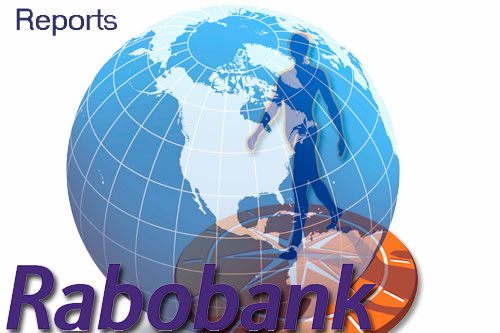PEDv challenging pork markets

According to the recently released Rabobank Pork Quarterly report, the global pork market is moving into record territory in Q3. Especially in the exporting countries impacted by the porcine epidemic diarrhoea virus (PEDv), hog and pork prices will continue to break records in the remainder of Q3 and into Q4.
In the non-impacted countries, this, plus the high prices for beef and poultry, will support bullish hog and pork prices. However, in the European Union (EU) and China, markets will improve seasonally but will not reach the highs experienced in other countries.
“In the US, Mexico, Japan and South Korea, the countries that have been affected by PEDv, the key question will be ‘Where to source pork?'” said Rabobank analyst, Albert Vernooij. “In these countries the supply drops, as well as declining feed costs, are expected to push farmer’s profitability into record territories. In contrast, processors’ margins will be pressured due to the strong competition for hogs.”
While the US is mitigating the effects of PEDv on supply and prices with rising hog weights (recently up nearly 5% on last year), the growing scarcity of pork globally is pushing import prices up, impacting Mexico, South Korea and Japan in particular. In Mexico, pork meat prices have increased around 25% year on year and have the potential to increase another 5%. Also feeling a significant impact is Japan, where imports are relatively expensive compared to other importing countries due to the low value of the yen. With beef supply also under pressure, Japanese processors will find it challenging to source sufficient meat supplies.
For China, the prospects are turning positive with hog prices forecast to recover after a very difficult 1H 2014. Chinese pork prices are expected to stay at the current low level in most of Q3 2014, but will likely show a strong rebound from the end of Q3 onwards driven by the seasonal uplift in demand and lower supply after the sow culling of the last months. This will be supported by the limited global supply, which will increase competition for imports and support higher prices. The key challenge for hog farmers to recover part of their losses is to limit herd expansion. Many smaller farmers will face shakeouts in 2014, which will advance market consolidation.
Being the only region with enough pork available at reasonable prices, prospects for EU exports to Asia and the US remain positive. However, this will not be sufficient to totally compensate the lower export to central and eastern European countries. The Russian import ban remains a deciding factor for price levels. In addition the importance of exports to central and eastern European countries for the total carcass valuation, in combination with the high value of the Euro will limit the seasonal increase of EU pork prices. However, if pork trade between EU and Russia partially or totally reopens, it would give a positive boost to EU pork prices.
“With PEDv continuing to impact supply into 2015, prospects for the global pork industry remain positive,” concluded Vernooij. “The main wildcard is keeping supply discipline, as many farmers will be tempted to expand production driven by the low feed costs and high profitability.”
[Source: Rabobank]











